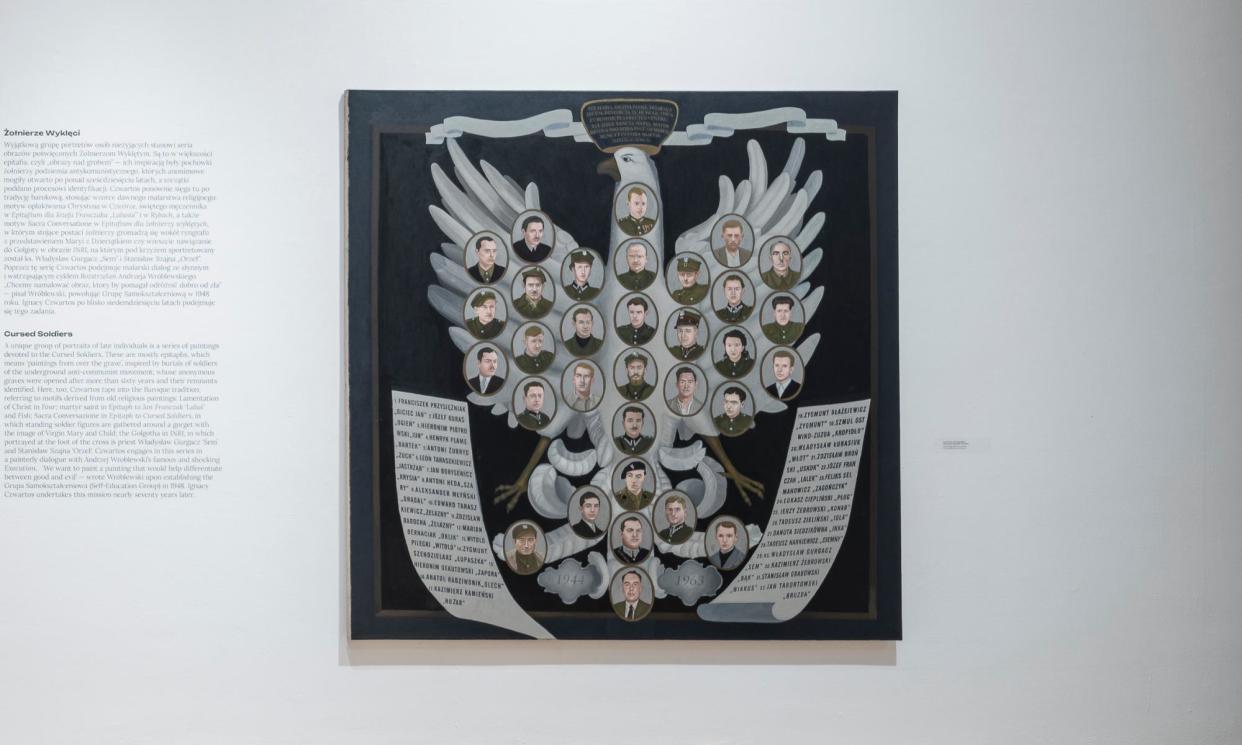Poland replaces Venice Biennale submission made under previous nationalist government

Poland’s new government has scrapped the submission conceived under the previous nationalist-populist administration for the country’s Venice Biennale pavilion and replaced it with an interactive show by a Ukrainian art collective, provoking complaints of “censorship” from the artist originally tasked with the Polish entry.
The culture minister, Bartłomiej Sienkiewicz, who was appointed by centrist prime minister Donald Tusk on 13 December, announced the withdrawal of the project, Polish Exercises in the Tragedy of the World: Between Germany and Russia, on Friday. The project had been announced in the dying weeks of the Law and Justice party (PiS) government in what was perceived as an ideological parting shot.
Sienkiewicz said he had decided to change the pavilion submission “after getting acquainted with the opinions and voices of the communities”.
Two days before Christmas, the new culture minister had dismissed Janusz Janowski, the director of the Zachęta National Gallery of Art that oversees the Venice nomination, and replaced him with the contemporary art institution’s former deputy director Justyna Markiewicz.
Consisting of 35 works by the artist Ignacy Czwartos, including a painting of Angela Merkel and Vladimir Putin connected by a flaming St Andrew’s cross in the shape of a swastika, the original submission had drawn criticism from within the Polish art community for heavily leaning into a narrative of national victimhood.
Three female jury members had signed a protest note against Czwartos’s nomination, criticising the revised rules of the selection process. The note stated that his pavilion was at odds with this year’s inclusive theme at the 60th iteration of the world’s largest contemporary art event, which opens on 20 April.
Czwartos has complained against the withdrawal of his work, telling the Art Newspaper that it was contrary to the regulations in force. “The selection took place in accordance with the legal procedures,” Czwartos said. “The verdict of the competition jury was accepted by the minister of culture and national heritage. The contract between me and Zachęta Gallery, the institution responsible for the realisation of the exhibition, has been signed. I perceive it as censorship.”
Instead of Czwartos’s paintings and sculptures, the Polish pavilion will contain a performance video by Ukrainian artistic collective Open Group. Entitled Repeat After Me, the film features interviews with forcibly displaced Ukrainian people from different regions of the country’s east and south, who narrate their memories of the war through the sounds they remember.
The karaoke-style video segments encourage visitors to recreate the sounds of air raid signals, shelling and various types of weaponry. Originally filmed at a refugee camp in Lviv, the video installation was first shown at the Labirynt Gallery in the Polish city of Lublin in November 2022.
Joanna Warsza, a co-curator of Poland’s 2022 pavilion and one of the authors of the dissenting opinion, welcomed the new plans for the pavilion plans as “a huge relief”.
She said: “We believe that Open Group’s proposal formally and ideologically presents the values that we want to defend. Openness, tolerance, care, empathy, and opposition to armed conflicts and responds to the overarching theme of the Venice Biennale – Foreigners Everywhere!”


